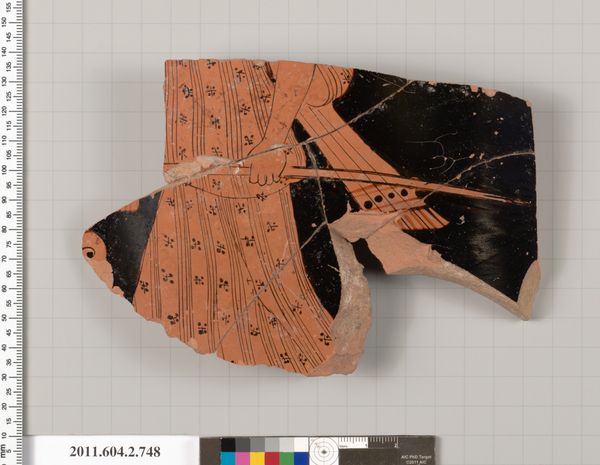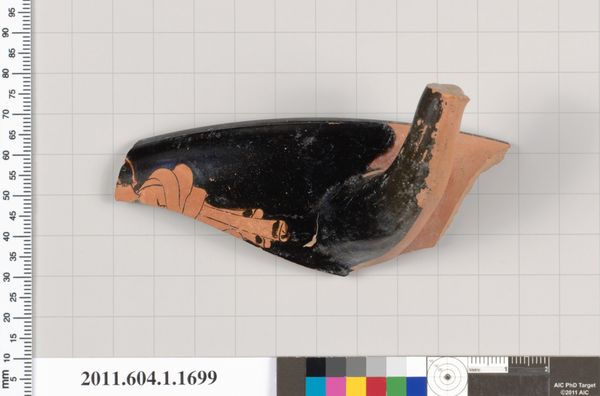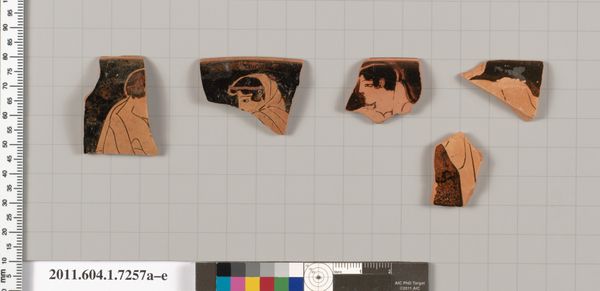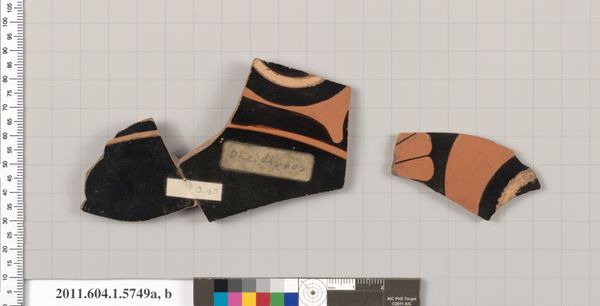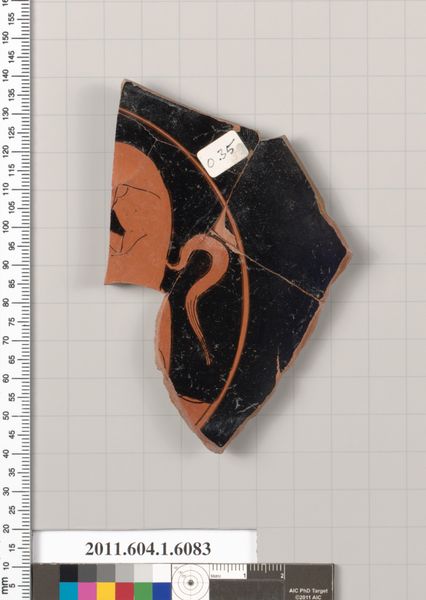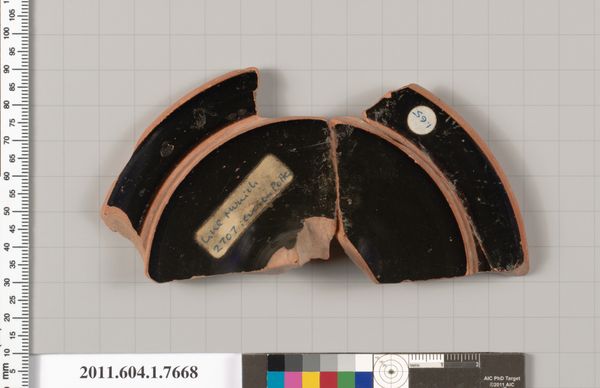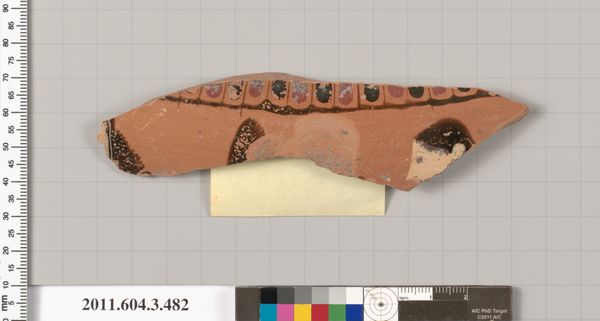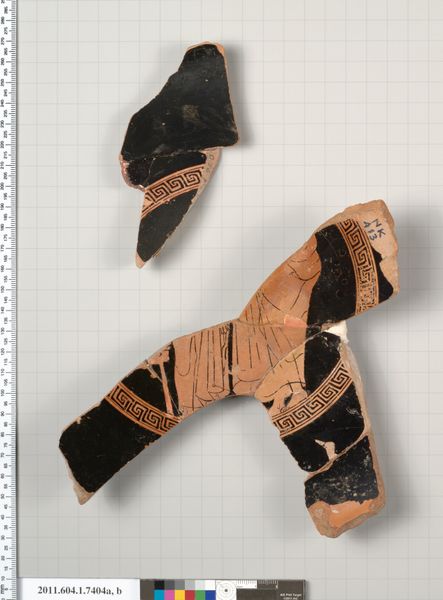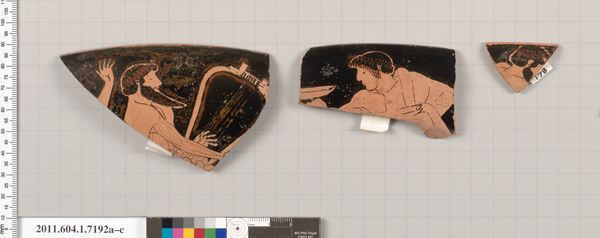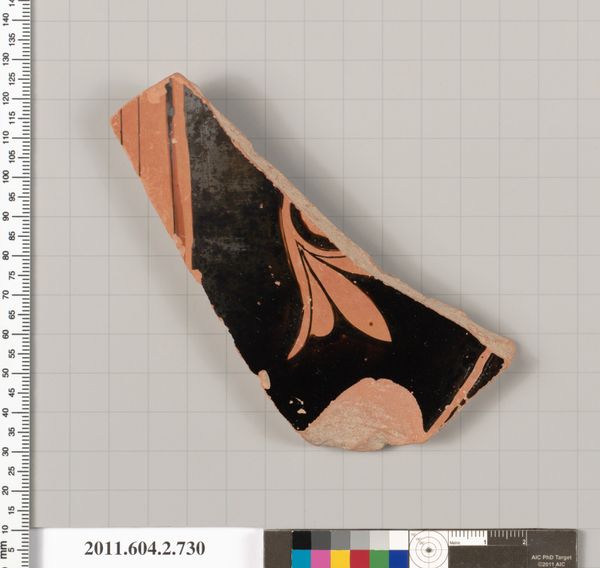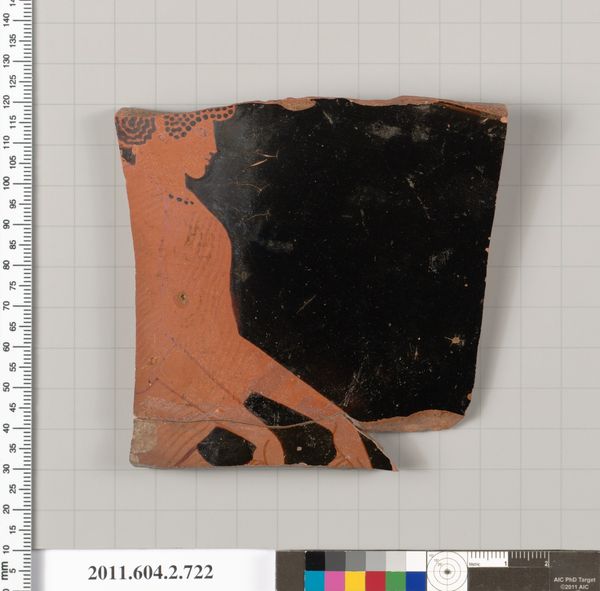
Copyright: Public Domain
Curator: We're looking at terracotta rim fragments of a kylix, a drinking cup crafted around 530 BC, possibly by the artist Makron. It’s currently held in the Metropolitan Museum of Art. Editor: Immediately striking is the contrast – the stark black background against the reddish figures. It lends the fragments a powerful graphic quality, even in their incomplete state. The lines are bold, confident. Curator: The red-figure technique is particularly crucial here. It was a revolutionary approach where the figures are reserved in red, while the background is painted black. It allowed for finer details to be rendered, enhancing the narrative possibilities of the imagery on pottery. Editor: Narrative, yes, I see a musician, head in profile playing the flute, but the broken bits... They make me think of a puzzle or perhaps evidence of daily use, even ritual use of ancient peoples of the time. This ceramic work carries so much. Curator: Indeed. The context of symposium, or gatherings where these cups were used is also of import. They were often decorated with scenes meant to amuse, provoke, or engage the drinkers. The fragmented form speaks volumes too; it is rare. It invites us to contemplate the rituals of life that continue in the now. Editor: Thinking about those gatherings gives this image its full voice. The fragmented vines could echo the effects of that consumption - not only in visual terms of drunkenness or of inebriation, but also in a cultural lens as symbols. There's so much embedded. Curator: The incompleteness only heightens the impact. We're left to piece together stories, to imagine what revelries this kylix may have been a part of centuries ago. Editor: A fascinating look at function meeting form, then fading from time. A relic of shared pleasure that now allows for silent and solitary engagement in an exhibit like this.
Comments
No comments
Be the first to comment and join the conversation on the ultimate creative platform.
